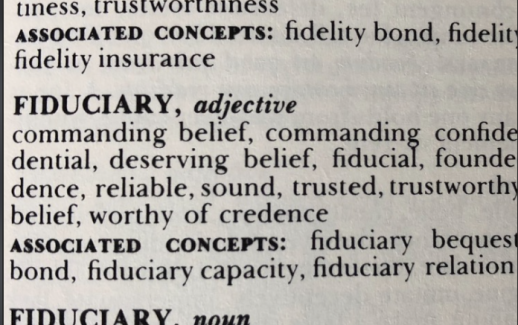“They’ll send 80 million ballots to people — they have no idea where they’re going,” Mr. Trump said during his 94-minute speech. “Actually, they probably do have a pretty good idea where they’re going, and that’s our problem. They send 80 million ballots out, where are they going? Who do they send them to? Are they sending them to certain areas, and not other areas?”
–CBS News, Trump claims at Nevada rally that Democrats are “trying to rig the election”
The operative words of division are “they” and “them” and the rest are smoke and mirrors to sow doubt in the 50 states’ election processes. It would seem a nearly symmetrical revenge for Vladimir Putin for when Secretary of State Hillary Clinton questioned the legitimacy of Vladimir Putin’s 2012 elections.
Here, the incumbent Mr. Trump, who assiduously avoids disagreeing or speaking against Putin, employs a demagogue’s distrust of over half of fellow Americans merely exercising their freedom to belong to different political parties. His premise is that those not in the party he is currently in must be conspiring to rig the election against him. It is a one-party premise wrapped in a stream of accusations mutating across speeches and tweets in flimflam fashion.
Trump’s premise mirrors Hillary Clinton’s infamous speculation about “a vast right wing conspiracy” aimed at her husband and then-President Bill Clinton before his impeachment. Hillary’s words turned a growing mass of internet and radio media influence by rightist pundits into a conspiracy theory in a left-version of the current “MSM” conspiracy theorizing. Such rhetoric, later reversed against her own party’s influence by today’s populists who doubt most news as fake, has ripened into a destabilizing disconnection between the public and professional fact-reporting as found on news pages. This, without realizing that the internet moves Op-Ed to the top of “stories,” or “news,” when Op-Ed is argument on emphasized reported facts, not an informational briefing on all professionally vetted facts.
Trump now implies there is a vast left wing conspiracy to rig the 2020 campaign against him. Both Clinton and Trump supporters have cited “hate” or “derangement” as the only real motive of those opposing each, respectively. It is as if they deemed their words and conduct above consideration by the people they swore to serve.
Mass information weapons keep whipsawing the United States no matter who wins the White House. Both political families have assumed some level of family succession rights to the White House, qualified or not, in governing work. Historically, the dynastic premise in the American Presidency has not worked well for the United States, and itself can become a division point.
FBI Director Christopher Wray said of the Russian intelligence services:
Moscow’s information weapons target American unity as dictators pursue successful global expansion to isolate the United States. The United States is unlikely to successfully thwart Moscow and Beijing from establishing influence, real estate leverage, and strategic military superiority in the world while divided at home.
Moscow’s FSB has been under Vladimir Putin’s implied mandate since at least 1998 as Putin and his spy services watched the 2000 Presidential election end in litigation pitting George W. Bush versus Al Gore. Partisanship in the United States had reached such a level after the Clinton years and impeachment that the GOP and Democrats pushed it a step further, embroiling the U.S. Supreme Court in the 2000 Presidential Election. This threatened the separation of powers and rule of law rooted in the imperfect yet best practice of leaving constitutional law interpretation to a life-tenured Supreme Court.
The Court’s handling of polarizing political questions that both sides insist cannot be resolved via election tempts the loser to assert independent rights to interpret and act on the Constitution as Rep. Chip Roy, R-TX encouraged Trump to do to avoid unfavorable Supreme Court decisions. Yet as long as Supreme Court decisions are observed as the law of the land by the majority of Americans and their parties, the separation of powers will survive.
KGB defector Yuri Bezmenov highlighted four phases of ideological subversion used by the Soviet KGB against the West: demoralization, destabilization, crisis, and normalization. The latter describes dictatorial action to solve for repetitive gridlock between relatively even factions. Rep. Roy’s advice to Trump to violate separation of powers by disregarding the U.S. Supreme Court’s holdings is a form of “normalization” condemned by constitutional scholars and commentators. Bezmenov described kinetic “normalization” occurring when the Soviets crushed the Czech Prague Spring of 1968 with tanks and bullets.
Bezmenov’s description of KGB ideological subversion is now used by partisan groups affiliated with both main US parties against each other. This, despite that the former Soviet Union’s and later Russian Federation’s subversion operations have marched in continuity with each other against the USA with joint effects on the American right and left into the present day.
The GOP’s libertarian, populist, and extremist members have adopted Bezmenov’s stages of ideological subversion to accuse the Democratic Party of the four phases in service to “Marxism” or “Communism.” Yet this ‘conservative’ camp remains silent and or denies that the Russian Federation’s active measures under Vladimir Putin are a continuation of the Soviet active measures program. Also, left-wing media analyze Bezmenov’s stages of ideological subversion to apply to the Trump campaign and Administration.
Putin’s active measures warfare is directed at both parties, if possible, to bring them into repetitive conflict until democracy breaks and one side or the other ushers in “normalization” a.k.a. dictatorship. Putin or his successors would then work on turning the winner into Moscow’s satellite or proxy if they were not already groomed for it.
As November approaches, Americans will benefit from reading-up on this and related topics. The key is to review, filter, and think through the historical context of the candidates’ behaviors, policies, words, and to be fair, those judged according to their actual decision making power.

